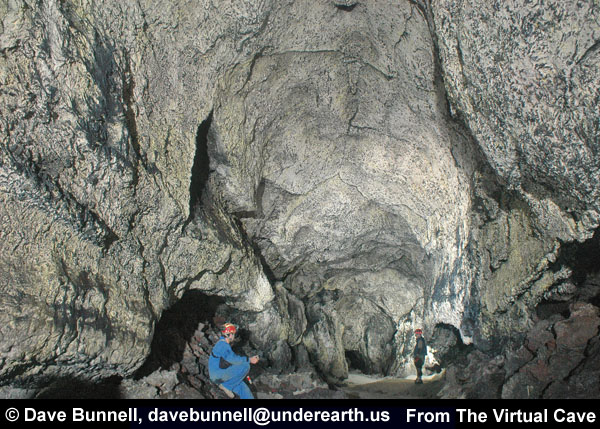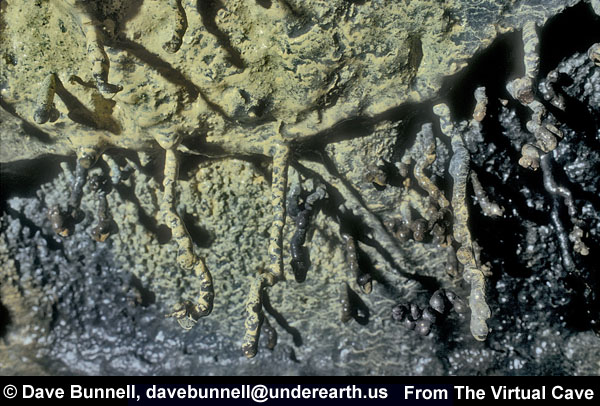

|
Organic deposits may coat the walls of tubes, usually taking the form of a soft, gooey layer that is easily rubbed off the wall but sometimes tightly adhering to the wall. These may range in color from white to tan to lemon yellow to golden to pink. Often these layers have water droplets adhering to them, giving a sparkly appearance to the cave passage. The droplets appear to be associated with a hydrophobic phase in the life of the bacteria in the Actinomycetales order, which account for some species of tube slime. Bacteria in the Actinomycetales have been the source of many of our antibiotics and some convert atmospheric nitrogen to forms that other organisms can use to obtain nitrogen. A variety of other orders of bacteria have been found in tube slime, and scientists are still investigating the potential for finding new species. Organisms can also be responsible for mineral
deposits on the walls of caves, especially ones containing phosphates,
chlorides, sulfates, and nitrates. |



| Back to: | |
 |
Created: December 11, 2008 Author: Dave Bunnell |